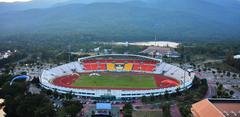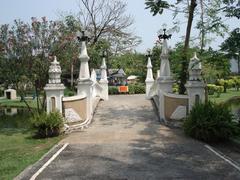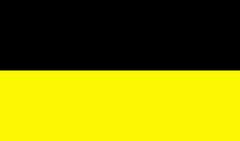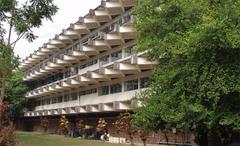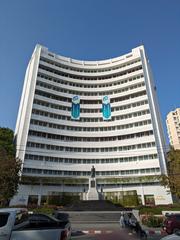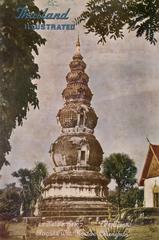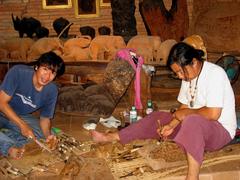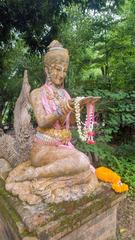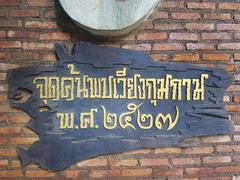Wat Chiang Man Visiting Hours, Tickets, and Guide to Chiang Mai Historical Sites
Date: 04/07/2025
Introduction
Wat Chiang Man, located within Chiang Mai’s ancient Old City, is the city’s oldest and most culturally significant temple. Founded in 1296 CE by King Mengrai, this sacred site is not only a spiritual anchor for the Lanna Kingdom but also a treasure trove of history, art, and architectural splendor. The temple is famed for its exquisite Lanna and Sinhalese design elements, its revered Buddha images—including the Phra Sila and the Crystal Buddha (Phra Sae Tang Khamani)—and its ongoing role as a center for Buddhist rituals and community life. This comprehensive guide presents all essential information for visitors, from practical details on visiting hours and ticketing to insights into the temple’s architecture, spiritual heritage, and nearby attractions. Whether you are passionate about history, art, or Thai Buddhist culture, Wat Chiang Man provides an authentic and enriching glimpse into Chiang Mai’s storied past and vibrant traditions (Renown Travel; Global Gallivanting; Chiang Mai Bus).
Contents
- Introduction
- Historical Context and Origins
- Architectural and Artistic Highlights
- Ubosot (Ordination Hall)
- Viharn (Assembly Hall)
- Chedi Chang Lom (Elephant Chedi)
- Other Structures and Symbolism
- Visiting Hours, Tickets, and Accessibility
- Dress Code and Visitor Etiquette
- Guided Tours and Facilities
- Participating in Religious Events
- Nearby Attractions and Travel Tips
- Responsible Tourism and Preservation
- Frequently Asked Questions (FAQ)
- Conclusion and Call to Action
- References
Historical Context and Origins
Wat Chiang Man was established by King Mengrai as his residence while overseeing the construction of Chiang Mai, making it the spiritual and political heart of the nascent Lanna Kingdom. The temple’s significance is commemorated by an ancient stele recording the city’s founding in April 1296. Over the centuries, Wat Chiang Man has survived wars, natural disasters, and numerous renovations, yet it continues to function as both a center of worship and a living historical monument (Lilla Green; Best Price Travel).
Architectural and Artistic Highlights
Ubosot (Ordination Hall)
The Ubosot is the temple’s ceremonial heart, built from teakwood and adorned with intricate carvings, gilded lacquer, and colored glass mosaics in the Lanna style. Naga serpents flank the entrance, symbolizing protection. Within, the revered Phra Sae Tang Khamani (Crystal Buddha) is enshrined—a small, ancient quartz image regarded as a talisman for protection and healing (thaimotorent.com; nashaplaneta.net).
Viharn (Assembly Hall)
The Viharn is an ornate gathering space for monks and visitors, featuring gilded columns, elaborate stucco work, and important Buddha images such as Phra Sila—a stone bas-relief believed to date back over 1,000 years and central to local rainmaking ceremonies (chiangmaibus.org).
Chedi Chang Lom (Elephant Chedi)
This iconic 20-meter stupa is supported by 15 life-sized stucco elephants, symbolizing strength and stability. The chedi’s bell-shaped upper section, covered in gold, is influenced by Sinhalese design and believed to house a sacred Buddha relic. Its unique design has inspired similar structures in other Thai temples (itineraryplans.com; inthaitravel.com).
Other Structures and Symbolism
- Ho Trai (Scripture Library): Elevated for protection, featuring intricate woodwork.
- Lotus Pond: Unique among local temples, it provides a tranquil setting for reflection and meditation (thaimotorent.com).
- Decorative Motifs: Naga serpents, gold leaf, glass mosaics, elephant reliefs, and stucco panels depict Buddhist tales, local legends, and spiritual concepts (thailandforvisitors.com).
Visiting Hours, Tickets, and Accessibility
- Hours: Wat Chiang Man is generally open daily from 06:00 to 18:00, though some sources note 08:00 to 17:00 (Chiang Mai à la Carte; Top Asia Tour).
- Tickets: There is no official entrance fee; admission is free. Donations are encouraged to support temple maintenance and restoration (Chiang Mai Bus).
- Accessibility: The temple complex is mostly flat and accessible to those with limited mobility, though some older buildings have steps and uneven walkways. Restrooms are available on-site.
Dress Code and Visitor Etiquette
Respectful dress is required: shoulders and knees must be covered. Footwear must be removed before entering any temple building. Visitors should speak quietly, avoid touching religious artifacts, and never point feet toward Buddha images or monks. Women should not touch monks or hand items directly to them. Photography is allowed in most areas but prohibited during ceremonies or in restricted halls—always check for signage (Chiang Mai Bus).
Guided Tours and Facilities
Guided tours, often available in English and other languages, can be arranged on-site or via local agencies. These tours provide valuable context on the temple’s history, architecture, and rituals. Self-guided visitors will find bilingual informational plaques throughout the complex. Drinking water and restrooms are available near the entrance, and numerous dining options are nearby in the Old City (Chiang Mai à la Carte).
Participating in Religious Events
Wat Chiang Man is an active place of worship and hosts annual festivals, especially Songkran (Thai New Year) in April, during which the Phra Sila image is venerated in special ceremonies. Visitors are welcome to observe or participate respectfully, following staff guidance (Chiang Mai à la Carte).
Nearby Attractions and Travel Tips
Located within the Old City, Wat Chiang Man is within walking distance of other major sites:
- Wat Chedi Luang
- Wat Phra Singh
- Three Kings Monument
- Chiang Mai City Arts & Cultural Center
The temple is best visited in the cool, dry months (November–February). Early mornings and late afternoons are quieter and offer opportunities to observe monks’ routines. Bring modest clothing, comfortable shoes, sun protection, and (during the rainy season) an umbrella (Asia Highlights; Thailandee).
Responsible Tourism and Preservation
Support Wat Chiang Man’s ongoing preservation by making a donation, behaving respectfully, and supporting local artisans and businesses. Restoration efforts, including those led by Khru Ba Srivichai in the 20th century, ensure the temple’s heritage is maintained for future generations (Lilla Green).
Frequently Asked Questions (FAQ)
Q: What are Wat Chiang Man’s visiting hours?
A: Usually from 06:00 to 18:00, though some sources note 08:00 to 17:00.
Q: Is there an entrance fee?
A: No, admission is free but donations are appreciated.
Q: Are guided tours available?
A: Yes, tours can be arranged on-site or via local operators.
Q: What should I wear?
A: Modest clothing covering shoulders and knees; sarongs may be available for loan.
Q: Is the temple accessible for people with disabilities?
A: The main grounds are accessible, though some old structures have steps.
Q: Can I take photographs?
A: Yes, except during ceremonies or in areas with signs prohibiting photography.
Conclusion and Call to Action
Wat Chiang Man is a living testament to Chiang Mai’s spiritual origins and enduring cultural identity. With its ancient origins, remarkable Lanna architecture, and revered Buddha images, the temple offers a profound experience for every visitor. Respectful engagement—through appropriate attire, etiquette, and support for local preservation—ensures this heritage endures for generations. Plan your visit during recommended hours, explore nearby attractions, and enrich your understanding of Northern Thailand’s traditions.
For more travel insights and up-to-date guides on Chiang Mai’s temples, download the Audiala app and follow us on social media. Enhance your journey with curated itineraries, cultural tips, and exclusive content. For further inspiration, consult resources like Lilla Green, Nomadic Matt, and Best Price Travel.
References
- Renown Travel
- Global Gallivanting
- Chiang Mai Bus
- Lilla Green
- Best Price Travel
- Thailand for Visitors
- Nomadic Matt
- Chiang Mai à la Carte
- Top Asia Tour
- itineraryplans.com
- inthaitravel.com
- thaimotorent.com
- nashaplaneta.net
- Asia Highlights
- Thailandee
- mychiangmaitour.com
- bestofsoutheastasia.com
